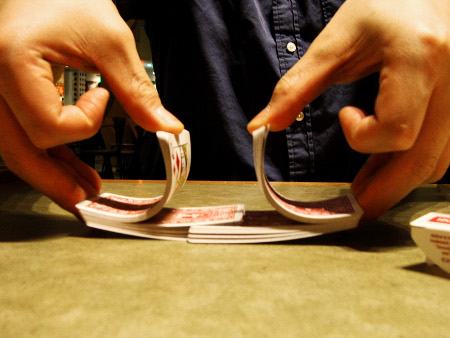
Arrange a deck of cards in alternating colors, black and red. Now cut the deck so that the bottom card of one pile is black and the other is red. Riffle-shuffle the two piles together again. Now remove cards from the top of the pack in pairs. How many of these pairs should we expect to contain cards of differing colors?
Surprisingly, all of them will. During the shuffle, suppose a black card falls first. It must be followed by either the next card in its own pile, which is red, or the first card from the other pile, which is also red. Either way, this first pair will contain one black card and one red card, and by the same principle so will each of the other 25 pairs produced by the shuffle. This effect was first identified by mathematician Norman Gilbreath in 1958.
Related: Arrange the deck in a repeating cycle of suits, such as spade-heart-club-diamond, spade-heart-club-diamond, etc. Ranks don’t matter. Now deal about half of this deck onto the table and riffle-shuffle the two halves back together. If you draw cards from the top in groups of four, you’ll find that each quartet contains one card of each suit.
See So Much for Entropy.
